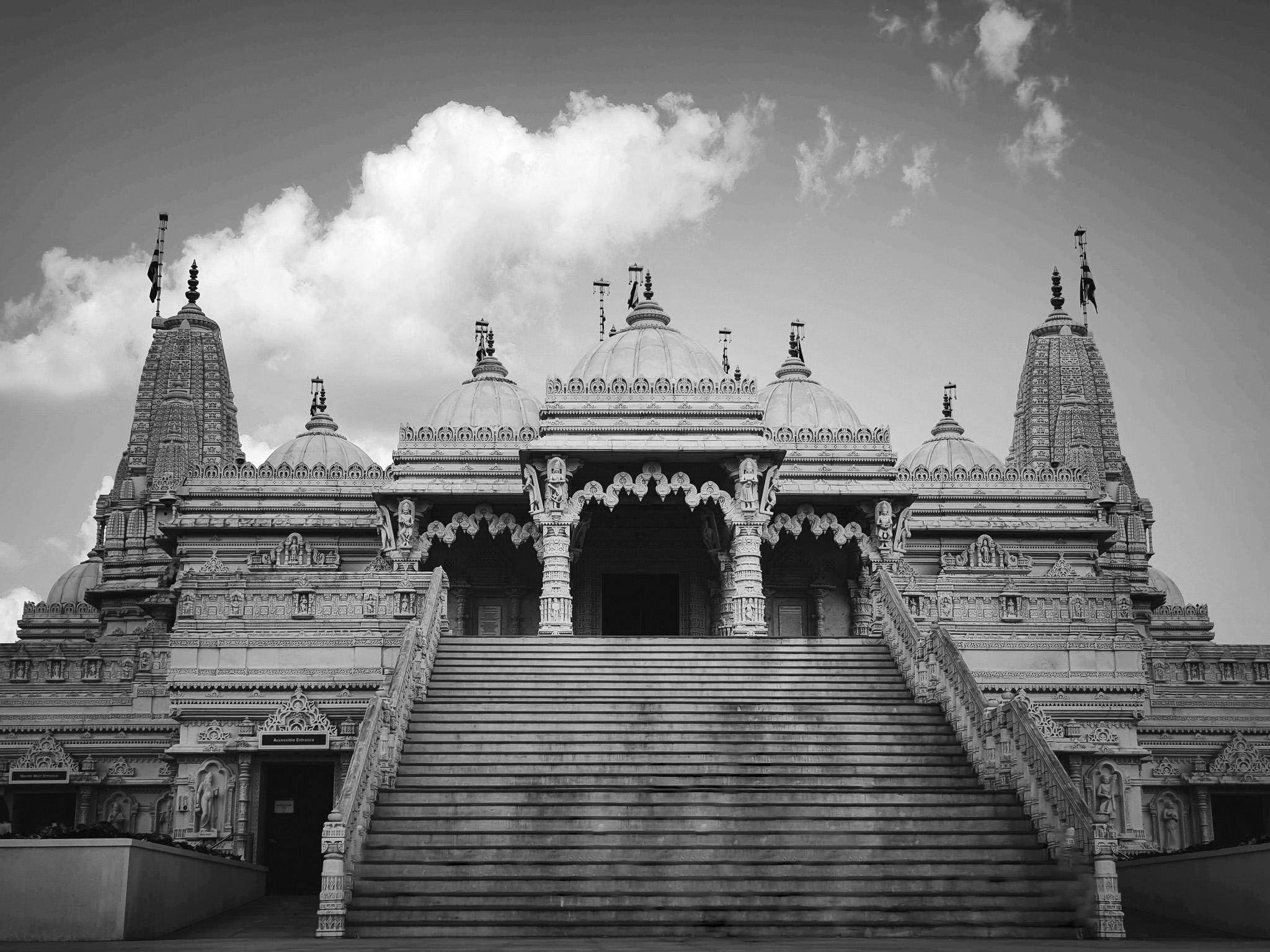The Call of the Divine
It feels natural to anyone who sees Makrana white marble that the stone is often the material of choice for spiritual applications. The versatility of Makrana marble – its unique combination of beauty and utility – means that Makrana has long been the chosen medium for the works of kings, artists, and craftsmen. The incredibly varied skills of the Ustaji today reflect the diverse nature of the stone’s usage. In modern times, it has become the first choice for the world’s most exceptional buildings, but historically, it has been revered as the stone of choice for honouring spiritually important subjects and places.
Some of the most imposing and spiritually significant buildings that have employed Makrana marble include Birla Mandir (Jaipur & Pilani), Ram Mandir (Ayodhya), Shri Radha Krishna Temple (ISKCON – Ahmedabad), Swaminarayan Akshardham (New Delhi), Prem Mandir ( Vrindavan), Hagia Sofia (Turkey), Mazar- e-Quaid (Karachi), Moti Masjid (Lahore), Sheikh Zayed Mosque (Abu Dhabi) and many more.
This spiritual heritage is an important facet of Makrana’s heritage and the spiritual significance of this beautiful stone must continue to be honoured and celebrated. The purity of the stone, the translucence of its finish, and the soft white glow it exudes, simply radiate positive energy and create uplifting spaces that feel healthy, healing, and spiritually open.

Divinity
At one time, Makrana marble was reserved for the glorification of subjects of divine importance. The stone was used to honour spiritually significant places such as temples, mosques, gurudwaras, and churches. It is easy to see why the Makrana marble was chosen for this purpose; it transforms a place of worship into an oasis of tranquillity, creating a cool, calm atmosphere with a sense of purity and spiritual cleansing.
From temples, churches, and mosques, to intimate household shrines, prayer rooms, spiritual artefacts, statues, and objects of meditation; there is no application too large or too small for Makrana to lend a feeling of ancient spiritual reverence.

Sompura Salat & Marble Murti
The Sompura Salat is a Brahmin community of artists and stonemasons who have, for generations, been engaged with the production of fine sculptures, statues, and idols. The word ‘Salat’ comes from an old word meaning ‘architect of temples’. The exquisitely fine work produced by the Sompura Salat is inextricably linked to their spiritual lifestyle. The stone they choose is an essential part of their life’s work, and Makrana is their marble of choice. This is more than simply an aesthetic consideration; Makrana has two other important attributes which make it perfect for pious purposes.
In the words of a member of the Sompura community, “Makrana marble doesn’t absorb external impurities.” In this way, the marble is a reflection of our own striving to withstand and resist the impurities of the external world. “Compared with other marble, Makrana marble will look exactly the same after a thousand years,” they add. It is essential then, that a piece of Art designed to capture the reverence and love that a community has for the deity it represents, must stand the test of time.
One of the most appealing aspects of Makrana is that its purity and prestige shine through whether it is used to create the grandest of building facades and flooring or the smallest of precious objects.
Makrana marble has been used since time immemorial to elevate religious imagery. Statues of deities and other religious subjects are perfectly rendered in the crisp white stone. Makrana is easy to work with and resistant to erosion, making it the perfect hard-wearing medium to capture the nuances of an expression or the intricacies of religious symbolism. Delicate statues and icons made from Makrana marble exude a soft white glow that reflects their importance in our places of worship and our homes. From the grandest of altars to the most humble of shrines or home mandir, Makrana is a fitting material to bring light, positive energy to illuminate these most intimate of practices.

Home Temples
A home temple is the most intimate of spiritual spaces; a place within the home where we can worship, meditate, pray, or simply pay homage. For individuals and families, the home temple forms the heart of the home. It is a place of solace, where the domestic gives way to the divine. In the midst of everyday life, it is an opportunity for calm reflection. For many, the home temple represents the continuation of tradition and the traditional values and beliefs that are integral to who we are, both culturally and as individuals.
श्वेत (Sanskrit, meaning white & pure) seeks to meet this most fundamental of human needs with elegant design in the most prestigious of materials. The transcendent purity of Makrana marble creates a beautiful space imbued with positive energy that radiates peace, allowing every individual to connect to their spiritual practice in a fulfilling way.
To know more about Shwet, please visit shwetmandir.com.